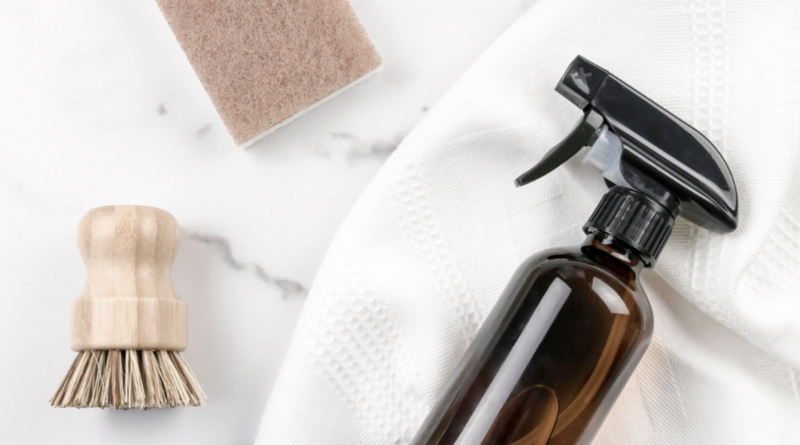How to Get Olive Oil Out of Clothes
Table of Contents
- Introduction
- The Initial Defense
- Vinegar Versatility
- Enzyme Efficacy
- Absorbing Excellence
- Baking Soda Brilliance
- Machine Wash Mastery
- Rubbing Alcohol Revival
- Dish Soap Dynamics
- Lemon Juice Lift
- Cornstarch Cushion
- Professional Stain Removers
- Heat vs. Cold: Which is Better?
- Insider Tips
- Clever Tricks and Expert Secrets
- Common Mistakes to Avoid
- Conclusion
- FAQ
Introduction
Olive oil is a favorite in many kitchens because it is good for you and works well in cooking. But, if you get a spill or splash on your clothes, it can be annoying. Oil stains stick to fabric and are harder to remove than water stains. The good news is that you can get olive oil out of your clothes without ruining the fabric if you use the right methods and products. This guide will show you the best ways to tackle even the toughest olive oil stains.
The Initial Defense
While dealing with an olive oil stain, speed is your best friend. The longer the oil stays on the fabric, the deeper it goes into the fibers. This makes it harder to remove. Here are the steps you need to follow right after the spill:
Blot the excess oil: Use a soft cloth or paper towel to gently blot (not rub) the stain. This can help soak up as much oil as possible before it sets.
Avoid heat: Do not expose the stain to heat. This includes heat from a dryer or hot water. Heat can set the oil into the fabric. This will make it much harder to remove.
Vinegar Versatility
Vinegar is a great herbal cleaner. It is often used to break down greasy stains. Here is how you can use it for olive oil stains:
Dilute white vinegar with water in a 1:1 ratio.
Follow the solution right onto the stain and let it sit for 10 to 15 minutes.
Rinse it with cold water. After that, wash the item like you usually do.
Vinegar is really good for delicate fabric that harsh chemical cleaners can hurt.
Enzyme Efficacy
Enzyme-based cleaners are very good at breaking down natural things like oils. These cleaners have proteins that can digest the oil and lift it from the fabric.
Apply an enzyme cleaner: To use an enzyme cleaner, pick a product that is made for grease and oil stains. Lightly rub the cleaner into the cloth. Let it sit for 20-30 minutes before rinsing it off.
Rinse and inspect: After treating the stain, rinse with cold water. Then see if the oil is gone. If you still see it, do the same step again before washing.
Absorbing Excellence
Absorbent powders like cornstarch, talcum powder, or baby powder are great for pulling oil from fabric fibers. This is a good choice if you can’t wash the garment right now
Sprinkle the powder liberally over the stain.
You should sit down for about 15 to 20 minutes to absorb the oil.
Shake or brush away the extra powder and look at the stain. You can try other treatment if
you want.
Baking Soda Brilliance
Baking soda is a strong stain remover, especially for oil stains like olive oil. It helps by pulling the oil out, which makes cleaning easier.
Create a paste: Mix baking soda with water until it becomes a thick paste.
Practice putting the paste on the stained area. Let it sit for 30 minutes to an hour.
Scrub softly using a gentle brush, like an old toothbrush. After that, rinse with clean water.
Baking soda is very good for tough stains. You can mix it with other methods to get a better result.
Machine Wash Mastery
When you have handled the olive oil stain, it is time to scrub the fabric. There are a few important steps to follow while washing to ensure the stain is completely gone:
Use cold or lukewarm water: Warm water can fix the stain, so using cooler water is better.
Add an extra rinse cycle: when you can, run another rinse cycle to make sure that all leftover oil and cleaning products are washed away.
Check before drying: Before drying your clothes, look at the stain. If you can still see it, do the stain removal steps again. Heat from the dryer can make the stain stay for good.
Rubbing Alcohol Revival
Rubbing alcohol is a good choice for removing oil stains. It works well to clean tough stains.
Apply fresh lemon juice directly to the olive oil stain.
Let it rest for 10-15 minutes. Then wash it with cold water.
follow up with an ordinary washing recurring.
Rubbing alcohol is a quick and easy solution, especially if you need it fast.
Dish Soap Dynamics
Dish cleaning soap is made to cut through grease on dishes. It can also work well on fabric. Choose a dish soap known for its ability to fight grease, like Dawn or another brand.
Apply dish soap directly to the stain right away. Rub it in gently using your hands or a soft brush.
Let the cleaning soap sit on the fabric for 15-20 minutes. Then, rinse it with cold water.
Repeat if important before device washing.
This method works well for all types of fabrics. It is one of the easiest and most user-friendly solutions.
Lemon Juice Lift
Lemon juice has natural acids that can help break down oil. It also leaves a fresh smell behind, which is a nice bonus.
Apply fresh lemon juice right on the olive oil stain.
permit it sit for about 20 mins.
Rinse the area well with cold water. Then, wash it like you normally do.
For tough stains, you can mix lemon juice with baking soda to clean it better.
Cornstarch Cushion
Cornstarch is a great absorbent that can help soak up oil from fabric. It works best if you use it right after the spill happens.
Sprinkle cornstarch on the stain. This will cover it completely.
Leave it on the stain for about half an hour to soak up the oil.
Brush or shake off the cornstarch and check the stain. Then, follow up with a gentle wash.
Professional Stain Removers
If home treatments do not work, professional stain removers made for oil stains can really help. Brands like Shout, OxiClean, and Zout are strong options for tough or old stains.
Apply the stain remover to the affected area according to the manufacturer’s instruction
Let it rest for the suggested time, then wash the clothing as usual.
These products work really well on stains that were washed and dried before the oil was treated.
Heat vs. Cold: Which is Better?
When getting rid of oil stains, it’s important to know when to use heat and when to skip it. In general, you should:
Avoid heat during the stain removal process, as heat can cause the oil to bond more deeply with the fabric
Use cold or lukewarm water to clean and rinse the stain.
Best use warmth, like from a dryer, after the stain is completely removed. This helps to set the soft fabric fibers.
Insider Tips
Act fast: the sooner you treat the stain, the easier it will be to get rid of it.
Test on hidden areas: Always test stain removal methods on a hidden part of the clothing. This helps ensure they won’t harm the fabric.
Be patient: From time to time, several rounds of stain treatment are needed. This is especially true for older or tough stains.
Clever Tricks and Expert Secrets
Dryer sheets for post-wash touch-ups: If you still smell oil after washing, try putting a dryer sheet in the dryer. This will help freshen the garment.
Hydrogen peroxide for whites: A blend of hydrogen peroxide and baking soda can be a strong team for fighting stains on white fabrics.
Avoid excessive scrubbing: Scrubbing too much can damage the fabric, especially soft fabrics like silk or wool.
Common Mistakes to Avoid
Using hot water: As mentioned before, hot water can make the stain last longer. This makes it much harder to remove.
Skipping the inspection: Always check the stain before drying the garment. Once it dries, the oil stain will be much harder to remove.
Using too much product: Overloading your cloth with cleaners can make it harder to rinse out the chemicals. This can lead to a buildup of leftover substances.
Conclusion
Olive oil stains might seem difficult, but you can get rid of them easily with the right steps. You have many options, from home solutions like baking soda and vinegar to store-bought stain removers. Remember to act quickly, avoid heat, and be patient with tough stains. With these ideas in your cleaning toolkit, no olive oil stain will beat you.




